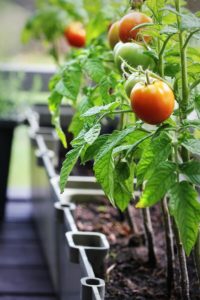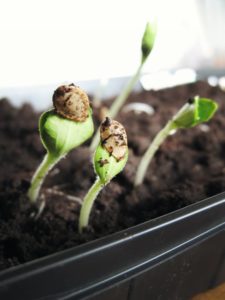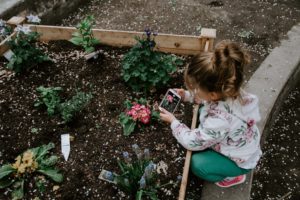
When life throws you a curve-ball, the best way to cope is usually to think fast and alter your game plan. Sometimes that means thinking of alternative ways to do some of the things we usually take for granted. If you have a little extra time on your hands and you’re looking for something enjoyable to do that will also help you keep busy, plant a garden! Gardening is mentally and physically healthy, it’s a rewarding process, and you have the potential for a fantastic end result.
By starting a garden now, you’re planting seeds for the future. After a season of growth, you’ll be reaping the benefits of the hard work put into caring for them, and you’ll have a bountiful harvest to show for the time spent at home.
Victory Gardens Help People Feel Empowered During Difficult Times
Many people all over America—and the world—are suddenly facing some big life changes. Fresh foods can be a little harder to come by than usual. And, for many families, one or more members has more spare time than they’re used to. It can be hard to find ways to fill in that time. If you’re looking for something to do that’s productive and meaningful, why not plant a garden?
But not just any garden—a victory garden!
The concept of the victory garden originated during World War I, when supplies of fresh food were relatively scarce. American families were encouraged to start their own gardens to provide themselves with fresh produce. This meant more food could be sent overseas to aid American allies. It also helped Americans feel united and empowered during difficult times. Victory gardens became popular again when America entered World War II. By 1944, there were 20 million victory gardens across America, growing an impressive 8 million tons of food!
Whether you’re already a keen gardener or you’re new to the whole idea, this is the perfect time to learn how to grow your own food and start growing vegetables at home.
What Plants Can You Grow at Home?
The hot, dry climate of Southern California means there are lots of different fruits, vegetables, and herbs that grow well here.
Some of the plants you can grow at home in California include:
- Fruits, such as citrus, avocado, and tomatoes
- Vegetables, like arugula, lettuce, peppers of all kinds, squash, cucumbers, radishes, and eggplant
- Herbs, including sage, basil, parsley, rosemary, thyme, lavender, and lemongrass.
Garden in Your Yard or on Your Patio or Deck!
While it does help to have plenty of room for a garden, you don’t necessarily need a backyard to be able to grow herbs, fruits, and vegetables. If you have a patio garden, you still have room for a modest harvest. Lots of herbs and even salad greens, such as lettuce and spinach, are happy to grow in containers.
Most herbs and other edible plants like plenty of sunlight, so keep this in mind when choosing where to place them. If your patio or yard doesn’t get much sun, you might find that your plants don’t grow as big as you expected or produce as many fruits. But as long as they get some sun each day and enough water, they should grow!
Veggies in Pots (Container Gardens)
Some of the best vegetables to grow in pots include:
- Lettuce
- Spinach
- Arugula
- Peppers
- Chilies
- Radishes
- Beans
- Peas
- Tomatoes
Note that beans and tomatoes need several hours of sun a day to really thrive. If you grow them on your patio, you may need to move the pots once or twice a day to make sure they get plenty of sun.
Veggies in Your Yard
If you’re lucky enough to have a yard for gardening, then you have the potential to grow a wider variety of vegetables. Plants such as corn and pumpkins can grow well in southern California, but since they need lots of room, they’re not a great option for patio or deck gardens. But if you have a yard, you may have room for these plants. Other veggies that do best in the yard are:
- Root vegetables, such as carrots, beets, and potatoes
- Cauliflower
- Broccoli
- Brussels sprouts
Where to Get Plants for Your Victory Garden
The startup costs of a new garden can be a little high, especially if you’re starting completely from scratch, but there are ways to keep these costs low and make growing your own vegetables, fruits, or herbs highly affordable. And of course, growing your own fresh produce at home is itself a great way to save money on your weekly grocery bill.
Wondering where to get plants to start growing at home? Here are some possibilities:
- Buy seeds or seedlings online for home delivery – Buying pre-prepared seedlings is the simplest and fastest way of getting a garden started, but this method is more costly than buying seeds.
- Buy online or over the phone at a local garden center, and arrange for a curbside pickup.
- Grow plants from seeds or scraps saved from produce you have at home – Many fruits, vegetables, and herbs can be grown from seed or from food scraps you would ordinarily throw away! From lettuce, tomatoes, and celery to citrus, garlic, and even avocado, you can grow new plants from the parts that are usually considered inedible.
How to Grow Your Own Food at Home
Once you’ve considered how much space you have for a garden and how much sun your deck, patio, or yard gets each day, there are a couple other things to take into account. Plants need time, water and nutrients, and regular maintenance to thrive.
Preparing Your Soil
To grow edible plants in your yard, you’ll first need to prepare your soil. This is an important step, because the plants you grow need access to essential nutrients such as nitrogen and phosphorous. For this step, layer compost, fertilizer, or your choice of additives, and use a garden fork to mix it all into the topsoil. Once the soil is ready, you can add plants.
If you’re growing in containers on your patio or deck, you’ll be able to skip this step. Instead of soil preparation, grow your plants in organic potting soil. This has all the essential nutrients already mixed in, so you’re good to go.
Growing from Seed
When growing plants from seeds, you have two options:
- Germinate your seeds indoors and then transplant them to containers or your yard.
- Plant your seeds directly in their containers or in your yard.
Either way can work, as long as the seeds get the light and warmth they need to germinate.
Every seed, no matter the size, needs to be planted at a depth that’s twice the seed’s diameter. If you’ve bought seed packets, refer to the instructions to determine how far apart to plant the seeds. Otherwise, check out online resources like The Farmer’s Almanac to find the best planting methods.
Transplanting Seedlings
Plants that are susceptible to cold weather, such as tomatoes and peppers, get the most benefit from starting off indoors. When you germinate seeds indoors, or buy seedlings, you’ll transplant them into containers or into your yard once they’re large enough. The best age to do this varies from plant to plant. Most seedlings are ready to transplant once they have at least two true leaves.
If you’ve bought seedlings from a garden center, they’ll usually be ready to transplant right away. When transplanting seedlings, take care to do it gently, and avoid disturbing the roots of the plants as much as possible.
Watering and Maintenance
Once your patio or garden is full of growing vegetables and fruits, all that’s left to do is tend the garden, and wait for things to grow! To keep your plants healthy and strong, they need regular watering, usually around 1 to 2 inches of water per week, and more when it’s very hot or dry. When you water, it should be a deep watering, rather than a shallow sprinkle. For instance, water one inch twice a week, rather than half an inch four times a week. Deep watering encourages strong root growth, which helps the plants take in more nutrients and grow larger.
Check out drought-tolerant plants here!
You may also need to do some weeding, to make sure the plants have plenty of room to grow. This is less likely in container gardens. And keep an eye out for pests, including bugs as well as mildew or mold. Any of these problems have the potential to harm a garden if not kept under control.
There are lots of great reasons to plant a garden, and the special circumstances of 2020 make it an even more appealing idea. If you haven’t given it a try before, learning how to grow your own food can be both fun and satisfying—exercise, fresh air, and even boosts to your mental health! By putting in the work at home, you’ll save money on grocery bills, while providing lots of fresh, tasty food for your family.





